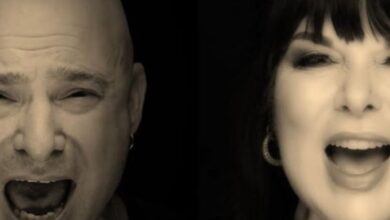Ink for the Prince of Darkness: Why Fans Are Honoring Ozzy Osbourne with Tattoos
When Ozzy Osbourne passed away, the shockwaves rippled far beyond the world of heavy metal. Fans across the globe, from small towns to bustling cities, sought ways to hold on to the man whose voice, lyrics, and stage presence had been a constant in their lives. For many, a tattoo became the most personal and permanent tribute they could give—an unshakable reminder etched into their skin of the “Prince of Darkness” and all he represented.
These tattoos are not mere images; they are deeply personal connections to the moments Ozzy helped them through. For someone who battled through their own dark chapters with his music in their ears, a tattoo might symbolize survival. It’s a way of saying, “You were there for me, and now you’ll always be here with me.” In every inked line, there’s a story—of heartbreak mended, fears faced, or joy amplified by the sound of his voice.
Portrait tattoos are perhaps the most striking of all. Some capture Ozzy’s youthful defiance, with his wild eyes and long, untamed hair. Others depict him later in life—older, but no less fierce—symbolizing endurance and resilience. Every wrinkle and shadow tells of a man who lived without apology, and the fans who wear these portraits on their skin carry that same unapologetic spirit.
Symbolic tattoos are equally powerful. The bat silhouette, infamous for that shocking moment on stage, has become more than a piece of rock folklore—it’s an emblem of rebellion. Crosses, ravens, and fragments of song lyrics also find their way into designs, each one echoing the themes of darkness, faith, and raw truth that colored Ozzy’s career.
For some fans, the choice of placement is as meaningful as the design itself. Tattoos on the forearm or wrist are visible daily, a constant reminder. Others opt for their chest, over the heart, to keep him close in the most literal sense. Some choose their back or shoulder, carrying Ozzy like a protective figure, always watching over them.
Many of these tattoos were done in the days and weeks immediately after his passing. Tattoo studios reported emotional sessions, where clients would share their favorite songs or recall the first time they saw him live. The buzzing of the needle mixed with laughter, tears, and stories, creating a kind of collective memorial where the artist’s chair became a place of healing.
Friends and family often join in, getting matching tattoos to commemorate a shared love for Ozzy’s music. It’s not unusual to see entire groups walk into a shop together, each leaving with a variation of the same design—a tribute that binds them to each other as much as to him. For them, it’s not just about remembering Ozzy; it’s about remembering the community his music built.
Social media has amplified the reach of these tributes, with thousands of fans sharing photos of their ink online. Some designs are meticulously detailed and realistic, while others are raw and simple, but all are met with support from fellow fans. Every “like” and comment from strangers across the world is a reminder that the grief—and the love—is shared.

The tattoos also carry a deeper meaning for those who never met him but felt they knew him. Through his music, interviews, and public struggles, Ozzy showed his humanity—flaws, mistakes, humor, and heart. For these fans, the tattoo is a declaration that they saw the man behind the legend, and they loved him for it.
In some cases, the tattoos are tied to specific songs that marked turning points in a fan’s life. Lyrics from “Mama, I’m Coming Home” might honor a lost loved one. The title “See You on the Other Side” can serve as both a farewell and a promise. These words, now permanently inked, become talismans of comfort in times of loss.

Artists who take on these projects often speak of the weight they feel while working on them. It’s not just another appointment—it’s someone’s way of saying goodbye. Every line must be steady, every shade deliberate, because it will be there forever, carrying not just an image but an emotion.
For many fans, getting an Ozzy tattoo is an act of gratitude. It’s a way of saying “thank you” for the music, the memories, and the lessons learned along the way. Gratitude for the courage he gave them to be themselves, for the strength his songs lent in the hardest times, and for the joy his performances brought.
The permanence of a tattoo mirrors the permanence of his influence. Just as the ink will remain long after the session is over, Ozzy’s impact will endure long after the final note has faded. These tattoos are proof that while people may leave, their art, their influence, and the emotions they inspire can remain eternal.
Even decades from now, these tattoos will spark conversations. A stranger might ask about the design, and the wearer will have the chance to tell the story—of a man who changed music, of concerts that felt like lightning in a bottle, of lyrics that could break and heal a heart in the same breath. The tattoo becomes not just a personal reminder but a living piece of history.
In the end, the choice to honor Ozzy Osbourne with a tattoo is about more than music—it’s about love, identity, and legacy. It’s about keeping a part of him alive in the most personal way possible. For the fans who bear his image or symbols on their skin, the connection is unbreakable, the tribute eternal, and the message clear: the Prince of Darkness may be gone, but he will never be forgotten.










